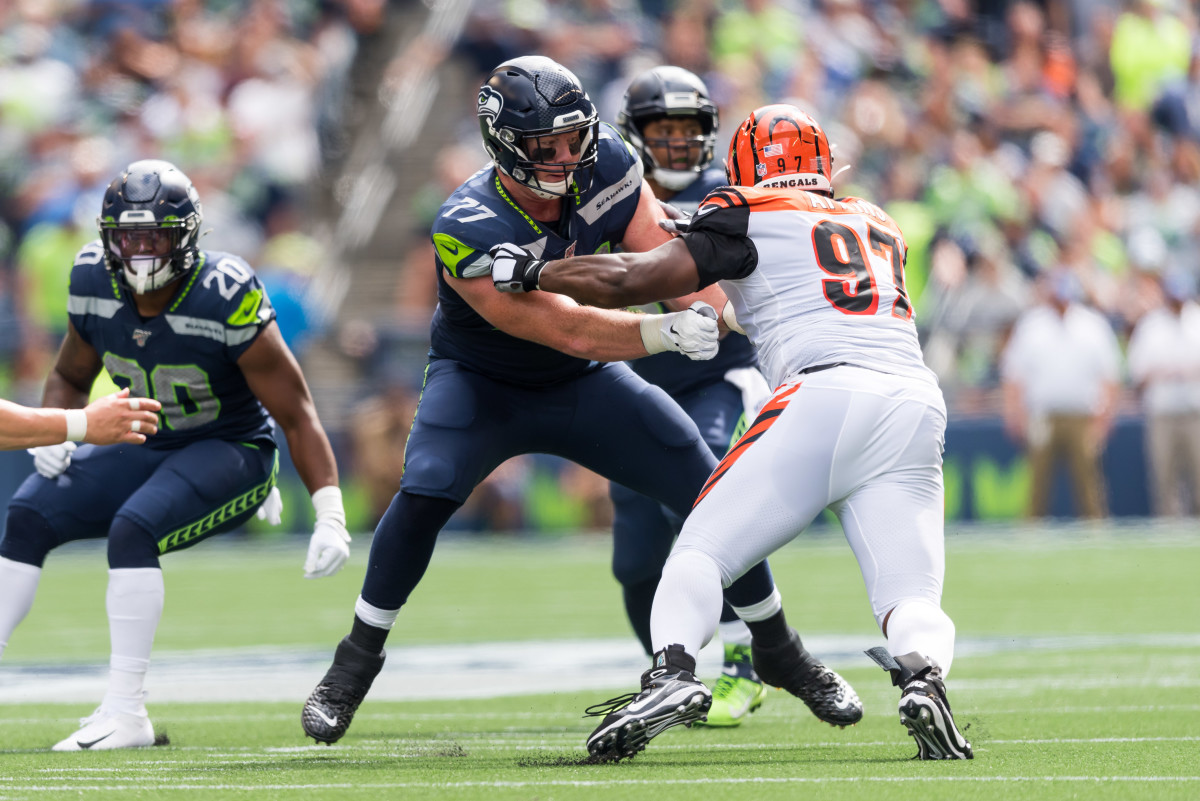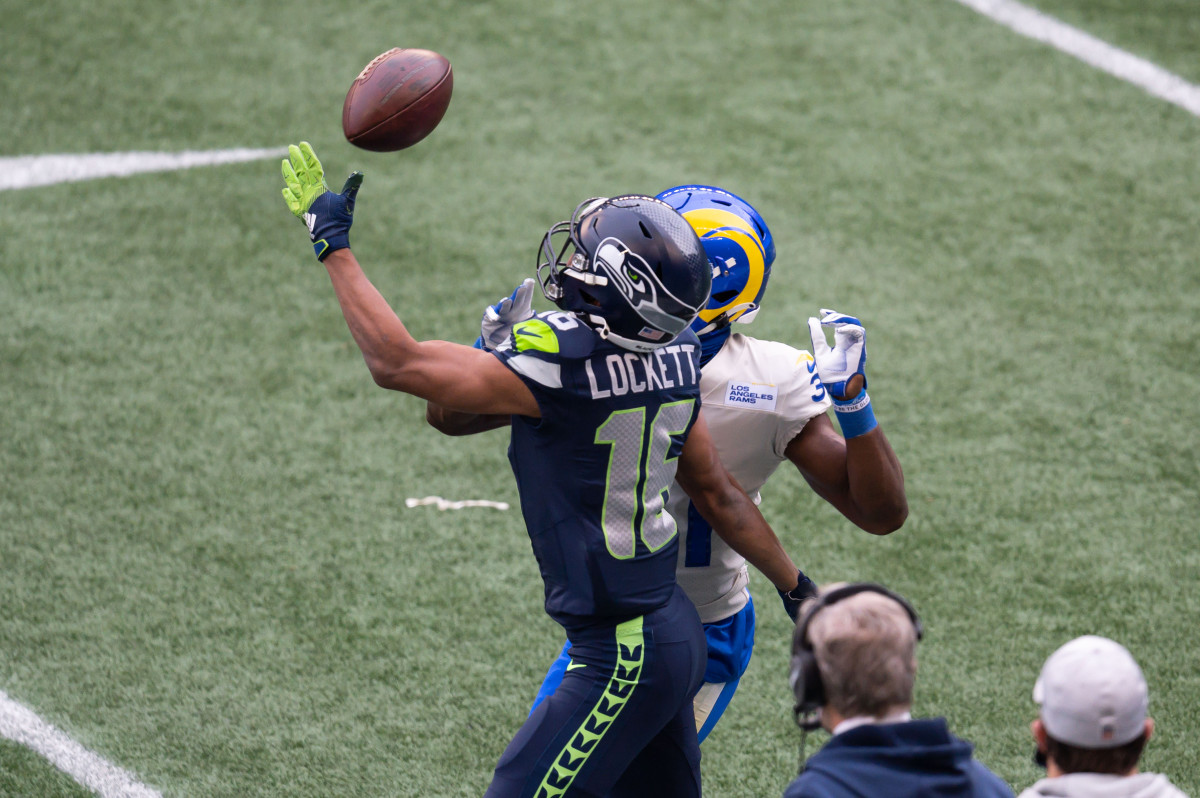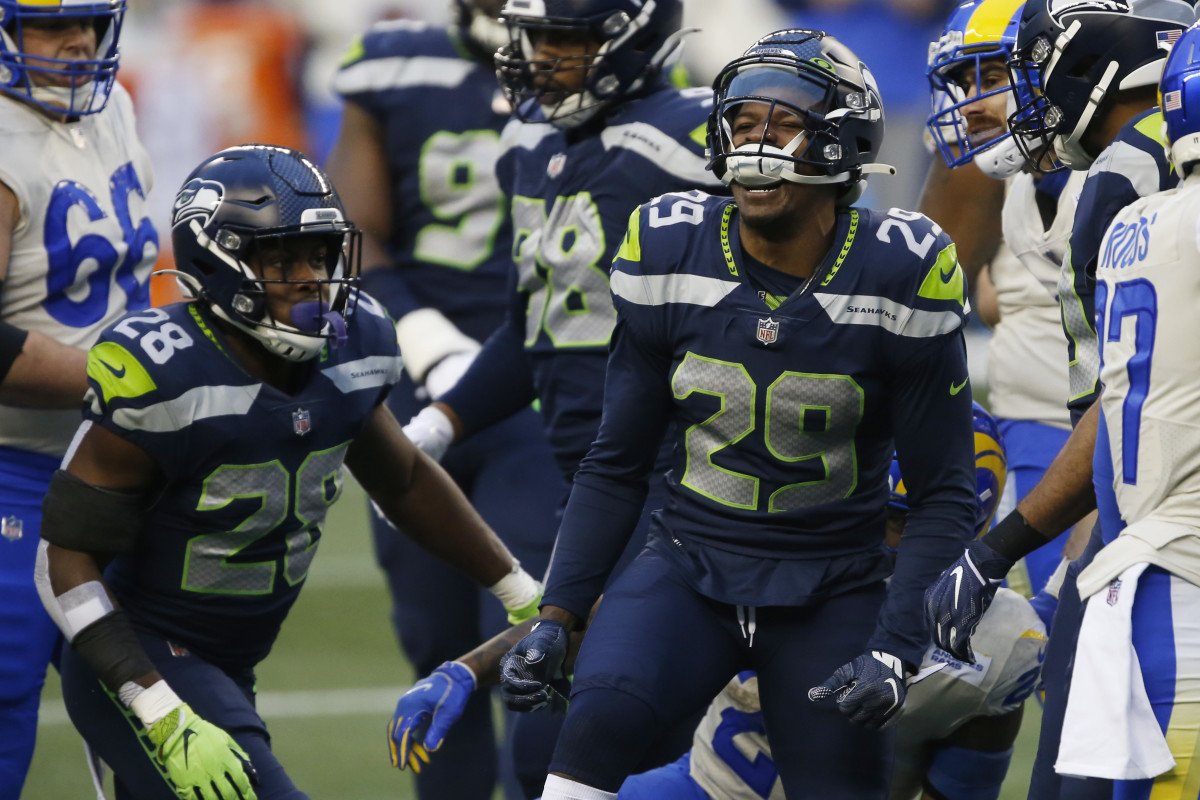Analysis: 3 Immediate Draft Needs for Seahawks in 2021
In many ways, the Seahawks going one and done in the playoffs was an act of courtesy. How kind of the team to get it over quickly, vanquishing any hope of world championship success as quickly as it might have started. Forget the stressful postseason - we are now able to focus on the dreamier matters that the offseason entails. The exhilarating expectations of free agency and the NFL Draft start now.
It’s this down time where every franchise feels like they could be great and every fan base can believe that their team could hoist the Lombardi trophy with just a few heralded additions. No one can tell them that they are wrong; there are no pesky win-loss records or bad defeats. People say it’s the hope which kills you, and that may be true, but without hope what is fandom? Nothing.
From a Seahawks perspective, looking at their draft needs is a nice kickoff to the offseason aspirations. The draft is likely to be even more chaotic this year due to the heavy impact COVID-19 had on the 2020 college football season. One prime example is the limited amount of film available in comparison to years past. Certain seniors are returning for another shot after the NCAA granted an additional year of eligibility. The 2021 NFL Combine has been cancelled and, instead, teams will have to rely on pro day numbers. This, in turn, may put smaller school players at a huge disadvantage.
Though Seattle only has four picks (see below), the warped draft has made the peak potential of these selections feel higher than it ever could have been. In 2019, Schneider turned water into wine - at least when it comes to the number of draft picks. After owning just four picks, Schneider traded defensive end Frank Clark to the Chiefs for a first-round pick and a future second-rounder, utilizing the former to eventually accumulate 11 selections in total.
This year will be different given Seattle does not possess a first-rounder; they had one of their own in 2019. Yet Schneider's proven acumen at navigating the draft should net the Seahawks more opportunities, perhaps six picks with two or so in the Day 2 range.
Here's what they're working with this year:
- Round 2
- Round 4
- Round 5
- Round 7 (Maybe)
There's still a bit of confusion on if the Seahawks will have a seventh-round selection in this draft or not, and there aren't really any concrete answers out there as of now. It would either be from the trade for safety Quandre Diggs OR their original seventh-round pick; they gave an undisclosed seventh for defensive end Carlos Dunlap. They may be giving the remaining seventh to the Jets for cornerback Parry Nickerson, but this was a conditional pick so we don’t know yet, although it feels unlikely any of the conditions were met.
The importance of drafting well is heightened given that Seattle lacks salary cap space. We don’t know the exact cap figure for next season, with ProFootballTalk estimating on January 19 a league-wide fall to $180 million. At the time of writing, Spotrac estimates the Seahawks’ 2021 space to be $4,311,504 - based off the top 51 earners. Sure, certain cap trickery and cuts can be executed to increase this number. However, Jamal Adams’ presumed mega contract must be factored into the equation. That’s true whether Adams gets extended in this year or in 2022.
Yes, events will still happen which create certain roster holes. For instance, Seattle may (hilariously) need another linebacker if SAM-WILL extraordinaire K.J. Wright gets deservedly paid elsewhere. Free agency will also fill certain areas. More obvious strong and weak points on the roster will therefore emerge.
Additionally, when John Schneider is drafting players, Seattle tends to go best player available or pick-value over pure positional need. For any team, the drafting process is a blend of each factor, but Schneider has historically weighed it with that bias.
Despite those two factors speaking against need assessment, I’m still going to cover the immediately obvious Seahawks needs. Let’s have some much-required fun! Writing this article recently after the Seahawks' Wild Card loss to the Rams means that Seattle’s 2020 struggles are still fresh in my mind. Focusing on immediate draft needs encourages a mindset that emphasizes upgrades over replacements.
It’s worth keeping an extra attentive eye on these positions, especially ahead of the 2021 Senior Bowl - which begins January 30. Remembering that the Seahawks must get more picks, here are their three other necessities:
INTERIOR OFFENSIVE LINE

Russell Wilson did not look comfortable at quarterback as his ecosystem became increasingly fragile this season. The success of the #LetRussCook movement, more or less, died as protection slowly got worse and worse. In the Wild Card game, Seattle's offensive line struggled mightily, allowing its worst pressure rate of the year - a 67 percent clip on all dropbacks, per Pro Football Focus.
Veteran franchise left tackle Duane Brown is a ticking time bomb at the position given he turns 36 in August and there is no real succession plan behind him. However, the interior of the offensive line was the most concerning aspect of the unit. If Wilson is to be more comfortable accessing certain windows from the pocket while thriving within structure, he needs a stronger interior.
Mike Iupati has been a key cog in the gap run schemes of the Seahawks, pulling on trap and power runs. Disappointingly, the 33-year old struggled throughout the season nursing injuries, rotating in and out with Jordan Simmons. Clearly not 100 percent, Iupati ended the 2020 season playing his worst football. When it comes to Simmons, it’s uncertain if he is the answer at left guard.
After the B.J. Finney free agency addition failed miserably, Ethan Pocic was given the center job. Pocic needs constant help as a center and is unable to survive one-on-one. This caps the Seahawks’ run game and pass protection schemes. One option would be to move All-Rookie right guard Damien Lewis to center full-time, but that creates a new need at right guard.
Seattle has invested draft capital at the interior of the offensive line in previous years. However, there have been murmurings that 2019 fourth-round pick Phil Haynes may not play football again after back-to-back injury-plagued seasons. Meanwhile, 2018 fifth-round pick Jamarco Jones has seemingly never earned the full favor of the coaching staff, plus ended 2020 on injured reserve with a groin injury. The Seahawks retained the rights to Chance Warmack - who opted out of the 2020 season - but he remains a long shot. Spending a Day 2 pick on an interior offensive lineman and hitting like they did in the third-round with Lewis last year would be ideal.
SLOT RECEIVER

I don’t care if this is a big slot or a small slot or what. In the back half of the 2020 season, Wilson turned down windows he has previously hit to Jimmy Graham, Josh Gordon, Sidney Rice, or whoever. Another issue the passing attack suffered from was the lack of a quick separator, like Doug Baldwin once was.
For Wilson to attempt certain throwing lanes, he needs to trust the talent of the target he is throwing to. He is a very matchup driven quarterback. On some of the two-high or zone-beating throws, he can’t see the whole picture and therefore must anticipate certain things. This is made easier by having size.
The 6-foot-7 frame of tight end Colby Parkinson could help some issues, but adding a dynamic move/Y tight end would really beef up Wilson's arsenal. Whatever the Seahawks do, they need to focus on unlocking the full field for Wilson.
In terms of a smaller slot, Tyler Lockett remains talented, yet his quickness has diminished after multiple injuries. Each season he appears to be hurt and his main skills are now based in catching difficult deep receptions or connecting with Wilson on scramble drills. Free agent signing Phillip Dorsett looked designed to take some of the load off Lockett, but the move never panned out with Dorsett missing the entire season with a foot injury.
When John Ursua was added in the seventh round of the 2019 draft, he looked like Seattle's main hope for a quick slot receiver, running a 6.77-second 3-cone at his pro-day. Ursua is now 27 and was leapfrogged on the roster by Penny Hart. The main issue for Ursua that coaches have talked about is his inability to learn the playbook.
Adding an agile receiver who wins off the line of scrimmage with crafty release plans would be a comforting safety blanket for Wilson. This would be especially true in the up-tempo situations that the quarterback loves, where the defensive looks turn more simplistic and the slot mismatch would be even more exposed.
Asked about being over reliant on Lockett and DK Metcalf in the passing game, and then asked how critical developing additional options - particularly across the middle - is, Wilson responded in his post-season press conference, “You’ve got to have multiple guys catching the football... That’s a really critical part to the passing game, to have multiplicity.”
OUTSIDE CORNERBACK

Finally, let’s move over to the defense. Seattle’s 2020 cornerback group played at a poor standard for too much of the season. It led to the Seahawks' coaching staff visibly lacking confidence in the players to execute their base schemes, resulting in whacky play calls and poor results.
Shaquill Griffin surely won’t return to Seattle unless his concentration lapses and sporadic play has plummeted his value to the point that no other team is interested in him. I heard last offseason that the team wanted a much bigger year from Griffin; if anything, he got worse in 2020.
Quinton Dunbar was a savvy addition for a fifth-round pick that didn’t work out due to his chronic knee injury. Perhaps he returns, but he may prefer a different opportunity. Tre Flowers’ confidence was shaky as soon as Dunbar was added, leading to his worst year.
D.J. Reed is clearly the best corner Seattle has on hand right now. This speaks volumes given he was added off waivers and few expected him to contribute in 2020, let alone on the outside. He remains short and some way off the Seahawks’ historic build for a cornerback. What's nice about Reed is his two-way go, spacier slot play gives him some left/right versatility.
Reed’s emergence led to Carroll talking cornerback profiles in his Week 15 post-game presser.
"Everybody's known the long-arm corners and all that stuff, that's what I've always wanted,” Carroll said. “They [cornerbacks] come in different shapes and sizes, you know? And we just have to be open to it and not be stubborn about everyone has to be like this mold."
Carroll brought up his cornerbacks from when he was the defensive coordinator at North Carolina State in the early 1980s, "where all of our corner play and the source of it started." He touched on 6-foot-2 corner Perry Williams, whom Carroll, while miming a press jam, described as "beautiful." To contrast, Carroll also name-dropped the 5-foot-7 Donnie LeGrande.
With the way NFL games are now called, a strong argument can be made that greater emphasis should be placed on 3-cone times and short area quickness rather than arm length. It is difficult for corners to stay over the top of their receiver in the step-kick jam position and stay within the current rules. Carroll and Schneider have never taken a corner with arms shorter than 32 inches, though the former's comments could indicate a change to that philosophy in the future.
Whatever prototype Seattle opts for, they need more cornerbacks. This could be typical Day 3 projects, like a safety conversion. Or they could just take a natural corner. L’Jarius Sneed, taken in the fourth round of the 2020 NFL Draft by the Chiefs, is evidence that small school guys who played a ton of press coverage in college could be the new long (31 3/8”), fast corner inefficiency. The other option is the Seahawks taking a cornerback with their first pick, which makes sense given the desperate need and general importance of the position.
